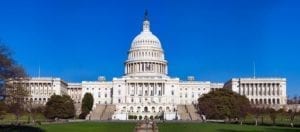Update: As of 12/29, President Trump has officially signed the second round of Covid-19 relief into law. But, the Senate still may vote this week to increase direct payments from $600 to $2,000.

Congress reached a deal on Sunday approving a $900 billion Covid-19 relief package. The long-awaited stimulus will provide billions of dollars in aid to individuals and small businesses across the country. Here’s what’s included in the new bill:
- Direct payments of $600 to qualified adults, and $600 per child
- $284 billion in Paycheck Protection Program (PPP) small business loans
- $20 billion in grants to small businesses, and $15 billion in grants to live music venues
- An added $300 unemployment supplement
- $30 billion toward the procurement and distribution of vaccines
- $82 billion in relief to schools and colleges
- $25 billion toward rental assistance, and an extension of the federal eviction moratorium for an unspecified amount of time.
- $13 billion toward the Supplemental Nutrition Assistance Program (SNAP).
- $45 billion in relief for transportation companies, including $15 billion for airline payroll assistance
The direct Payments and PPP loans will go a long way to help individuals and small businesses while we wait for a more robust relief package in the new year. Boxelder Consulting is here to answer any questions you have on the latest relief bill.
Here’s what you need to know:
Direct payments of $600: How do they work?
The government will send one-time payments of $600 directly to qualified taxpayers either by check or electronic deposit (if the IRS already has your bank account information).
There’s no need to apply to receive your stimulus. The IRS will use the adjusted gross income (AGI) on your 2019 tax return — or 2018 tax return, if you haven’t filed for 2019 yet — to determine who is eligible for direct payments. To receive the full payment, you must be:
- An individual adult earning up to $75,000 AGI,
- A head of household earning up to $112,000 AGI,
- Or a couple (filing jointly) earning up to $150,000 AGI (couples receive $1200, double the payment for individuals).
Plus, eligible taxpayers get an additional $600 for each dependent child.
Taxpayers with yearly incomes above these benchmarks will receive a partial payment that subtracts $5 for every additional $100 in annual income.
Does the Relief Check Affect My Taxes?
Just like the last round of $1200 stimulus checks, the new direct payment acts as an advance tax credit. It’s technically a $600 advance on your 2020 tax refund.
But this does not mean your 2020 refund will decrease. It’s simply $600 in addition to the refund you would have gotten anyway.
And since the stimulus is a tax credit, it’s not taxable income. Consider it cash in your pocket, no strings attached!
$284 billion in new Paycheck Protection Program (PPP) money
This is huge news for small businesses across the country. As we’ve covered before, the Paycheck Protection Program (PPP) is a loan program designed to provide small businesses with eight weeks of cash-flow assistance. And, they’re 100 percent forgivable.
When congress first passed the Coronavirus Aid, Relief, and Economic Security (CARES) Act back in March, it allocated $350 billion to PPP loans. The second stimulus package allocates $284 billion to keep the program running.
How do PPP Loans Work?
Just like the previous round of PPP Loans:
- All small businesses are eligible, as are sole proprietorships, individual contractors, and other self-employed individuals.
- The loans cover expenses for eight weeks.
- The loan has a maturity rate of 2 years and an interest rate of 1 percent.
- No payments are required for the first 6 months.
- The loan can be 100 percent forgiven
Your loan amount can cover up to 2.5x your average monthly payroll cost, with a cap at $2 million. To apply for a PPP loan, find an eligible lender through the Small Business Administration website, and fill out the application.
What’s new with the PPP loans?
The second round of PPP loans has a few key differences from the original round. Here’s what you need to know:
- Second-round PPP Loans cannot exceed $2 million. If this is your second PPP loan, the combined total of your two loans cannot exceed $10 million.
- Restaurants and food businesses are eligible for loans covering 3.5x their monthly payroll costs, as opposed to the 2.5x mark for all other businesses.
- To qualify for a second-round PPP Loan, a small business must have no more than 300 employees, down from the original 500-employee maximum.
- Small businesses must certify that they have had at least a 25-percent loss in revenue to qualify for a second-round PPP Loan.
- Second-round loans are only forgivable if they’re spent 60 percent on payroll costs.
- Both the original and second-round PPP loans cannot be taxed when forgiven. This means you can still record your qualifying expenses as deductions on your 2020 tax return.
- Loans of less than $150,000 can use a simplified forgiveness application.
To learn more about what conditions apply to PPP Loans, and how they can be completely forgiven, check out our Complete Guide to PPP Loan Forgiveness.
More Covid-19 Relief to Come
In a statement to the press, Joe Biden said the $900 Billion plan “provides critical temporary support” but “is just the beginning.” The U.S. government still has a long way to go to address the full scope of the recession.
“Immediately, starting in the new year, Congress will need to get to work on support for our Covid-19 plan,” Biden said. “There will be no time to waste.”
When the next stimulus package comes, you can count on Boxelder Consulting to provide the information you need. Give us a call at 888-573-5775 if you have any questions about the latest stimulus package and how it affects you.
